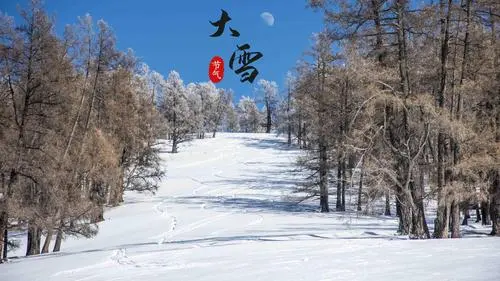“Light snow ends, heavy snow begins.” 7 ushered in the “heavy snow” solar term, marking the beginning of midwinter season. During this season, the temperature in most parts of China has gradually dropped, the chill has worsened, and some areas may also have snow weather.
The term “heavy snow” is not necessarily related to the heavy snow described in the weather forecast, but represents the climate characteristics during the solar term. “The seventy-second Hou of the month” said: “Heavy snow, November section, so far and the snow sheng also.” “Heavy snow” usually occurs in the lunar month of November. Sometimes the time of heavy snow will be in October of the lunar calendar, called “early heavy snow”.
Heavy snow is the 21st solar term in the 24 solar terms and the third solar term in winter. The sun reaches the yellow longitude of 255 degrees, and the intersection time is December 6-8 of the Gregorian calendar every year. Heavy snow is the beginning of the Ganzi month, marking the official start of midwinter season. Heavy snow is a solar term that reflects t

he characteristics of the climate. Heavy snow is characterized by a significant decrease in temperature and an increase in precipitation.
During the heavy snow, the national temperature dropped significantly, and the cold air in the north became more active. The Major snow term is a climate concept, which represents the climatic characteristics during the major snow term, that is, temperature and precipitation (meteorological rain, snow, hail and other water vapor condensation falling from the sky to the ground are called “precipitation”). The heavy snow solar term is the same as the light snow solar term, which reflects the changing trend of temperature and precipitation, and it is a reflection of the ancient farming culture for the seasons.






